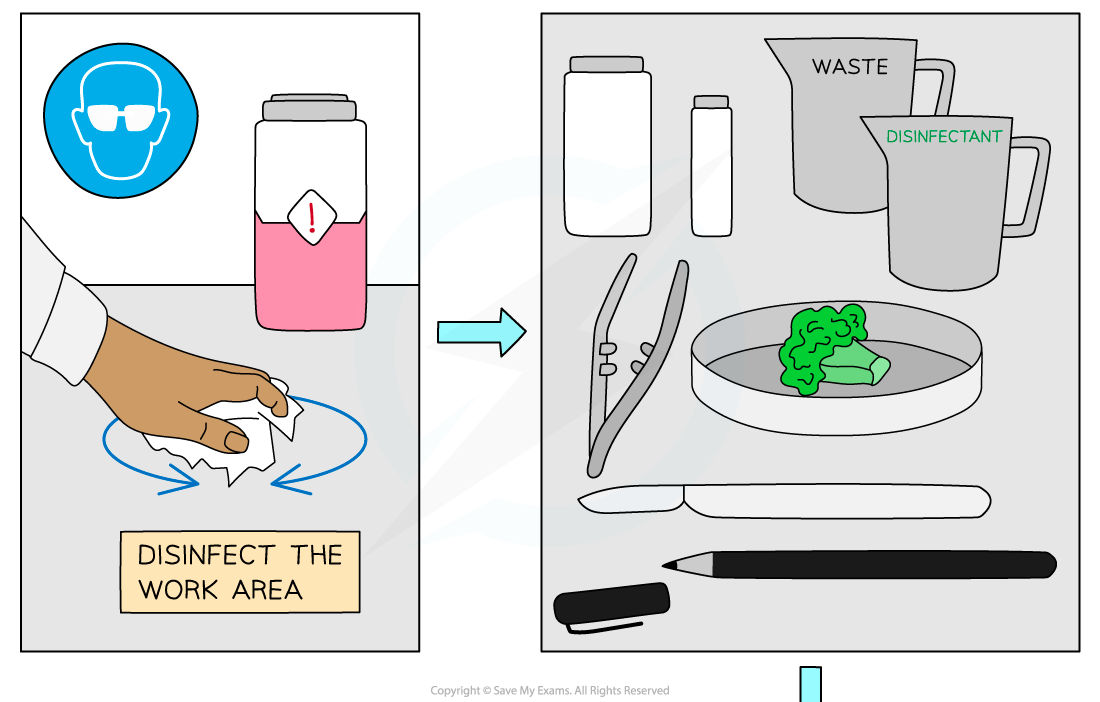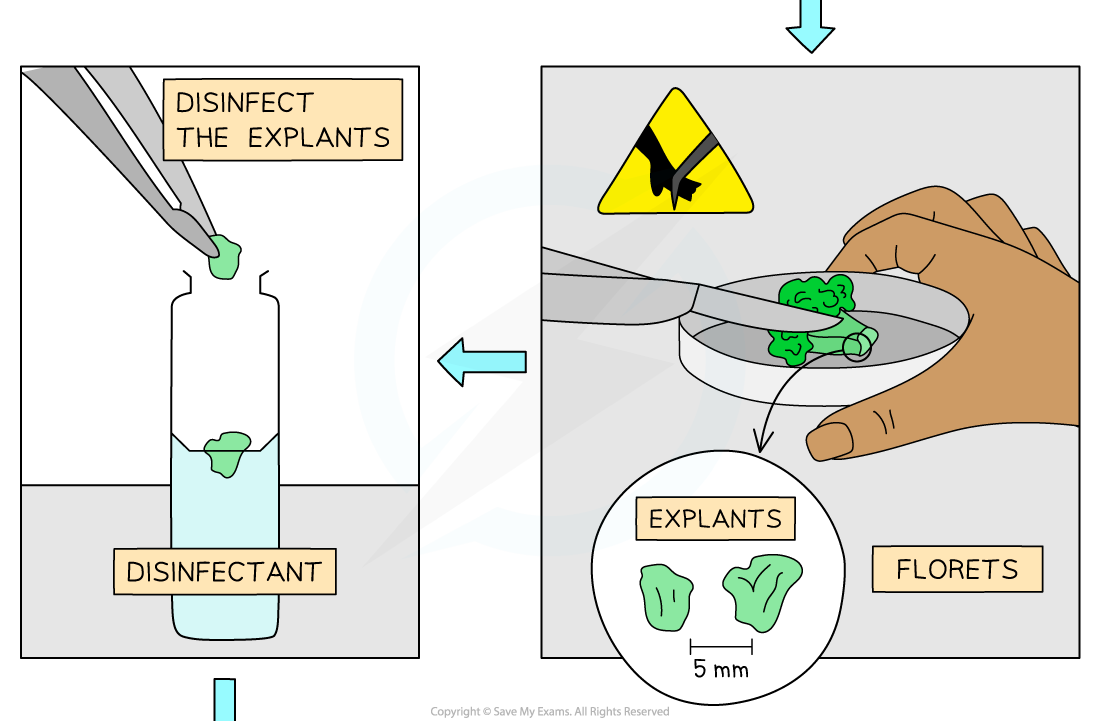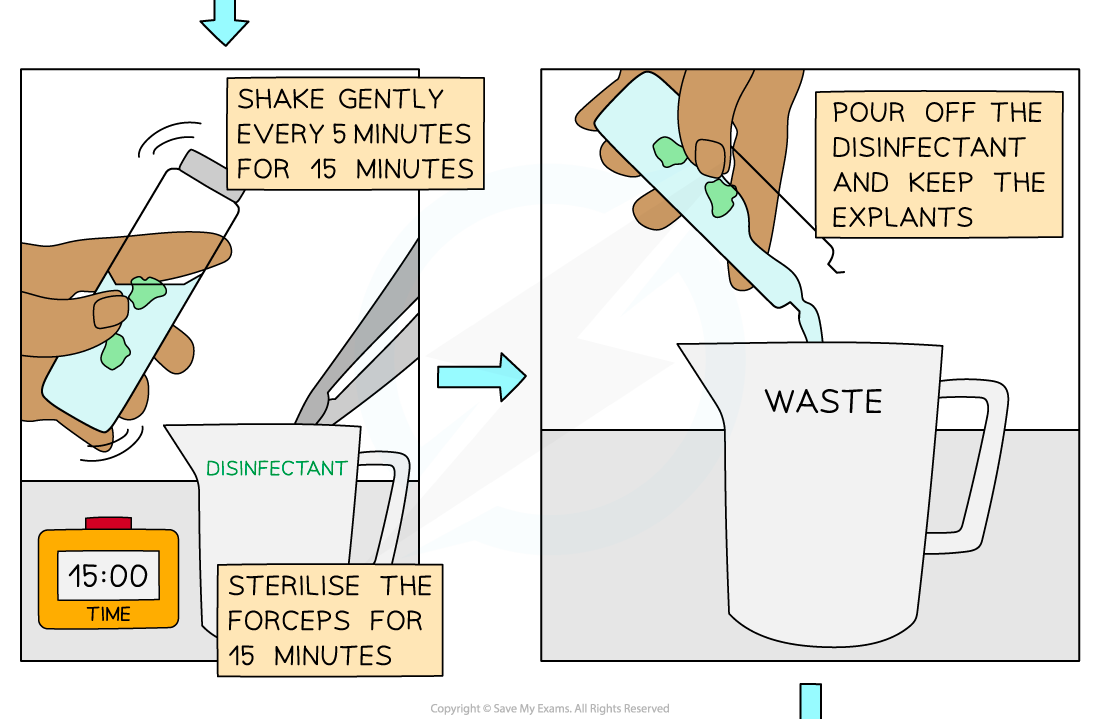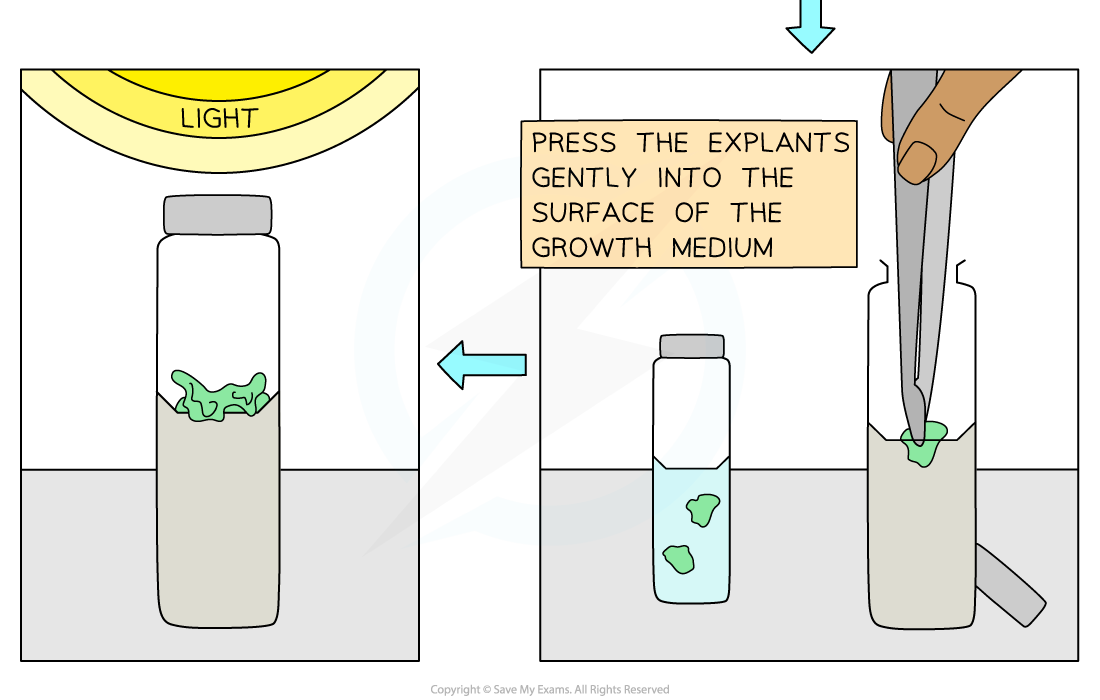- 翰林提供学术活动、国际课程、科研项目一站式留学背景提升服务!
- 400 888 0080
IB DP Biology: HL复习笔记9.3.3 Micropropagation
Micropropagation of Plants
- The nature of plant growth means that plants can be grown by a process known as micropropagation
- Micropropagation is a form of tissue culture in which plant cells are cultivated on nutrient growth media (singular medium) such as agar gel
- Micropropagation produces new adult plants from small samples of plant tissue in a laboratory setting
- Micropropagation can be carried out in plants because many plant cells can differentiate into any other type of plant cell, meaning that an entire plant can be reproduced from any totipotent cells
- Micropropagation involves the following process
-
- A small piece of plant tissue is cut; this is called an explant
- Ideally the explant is taken from meristematic tissue such as the tip of the growing shoot, as the cells are more likely to be totipotent
- The explant is sterilised to ensure that any new plants are free of infection
- The explant is transferred to a sterile growth medium, such as agar gel, containing nutrients and plant hormones
- The explant is allowed to develop into a callus: a ball of tissue containing undifferentiated cells
- The nutrient medium will often contain a combination of plant hormones, such as cytokinins and auxin, to encourage growth of different types of tissue
- A high ratio (>10:1) of auxin to cytokinins leads to root formation, while a less high ratio (<10:1) leads to shoot formation
- Once the new plant has developed roots and shoots, it is moved to soil where growth can continue
- A small piece of plant tissue is cut; this is called an explant



 Cauliflower can be cultured using a simple micropropagation procedure in the school laboratory
Cauliflower can be cultured using a simple micropropagation procedure in the school laboratory
Use of Micropropagation for Rapid Bulking Up
- Micropropagation is a valuable process in the production of large numbers of healthy plants
- Explants can be as small as a single cell so many new individuals can be grown from one parent plant
- Plants grown from an explant in agar take up less space than those grown using traditional cultivation
- It is carried out in sterile laboratory conditions meaning that the resulting new plants are free of bacterial, viral, and fungal infection
- Micropropagation produces plants that are clones of the parent plant so it can be used to produce many new individuals from one parent with desirable characteristics
- This is useful in commercial growing; once a new desirable variety has been bred or discovered more identical copies can be grown by micropropagation
- Plants that are at risk of extinction in the wild can be cloned and more individuals grown by micropropagation
- The new individuals will be disease-free and can be planted in the wild to improve wild population numbers
- Desirable plants such as orchids that suffer due to illegal collection and trade can be grown in the lab and sold legally rather than stolen from the wild
- Orchids are especially challenging to grow from seed and micropropagation has proved more successful
- Explants can be preserved by freezing, ready for use if needed in the future if a plant species goes into decline
转载自savemyexams

早鸟钜惠!翰林2025暑期班课上线

最新发布
© 2025. All Rights Reserved. 沪ICP备2023009024号-1








